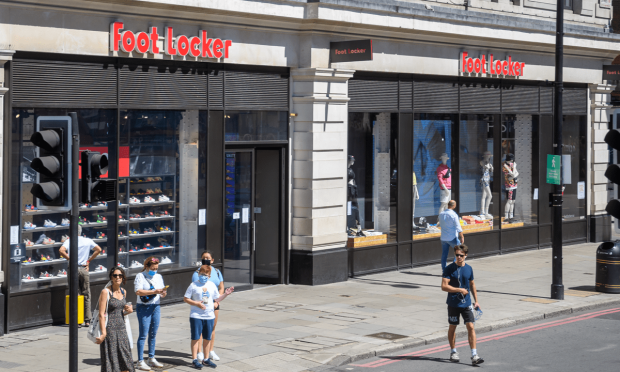Footlocker’s CEO Pick Reflects Retail’s Shift to D2C

When your consumers skew digital and your major vendors go direct to consumer (D2C), the store and mall formats that have worked in the past are no longer enough.
And for Foot Locker, branching out becomes imperative — especially across digital channels.
Friday’s news — through earnings and beyond — underscores the athletic retailer Foot Locker’s burgeoning efforts to address the challenges of its traditional B2C model in favor of a broader eCommerce pivot.
The company said Friday (Aug. 19) that it has partnered with Fanatics in a deal where Foot Locker will be responsible for the front-end activities; and Fanatics will fulfill those orders across an expanded assortment of licensed merchandise across various sports leagues such as MLB and the NFL, among others. Customers will be able to shop these goods through footlocker.com, kidsfootlocker.com and champssports.com.
And in a powerful signal of Foot Locker’s digital ambitions, as had also been noted Friday, incoming CEO Mary Dillon comes to the role directly from the top role at Ulta Beauty, and she had focused on building out that firm’s eCommerce ops.
Chief Financial Officer Andrew Page gave some detail on eCommerce initiatives that should help the company scale its digital initiatives, noting that eCommerce buildouts in Singapore and Malaysia are helping shape a “build once, deploy many” consumer-focused platform approach. The company is also gaining traction with its FLX membership program, and Page said that the loyalty program has paid off: Members spend 10% more than non-members.
Gaining more torque in the digital channels becomes especially important as key vendor Nike has pivoted to grow its own D2C efforts, which in turn had been widely-telegraphed earlier this year to take a bite out of Foot Locker’s sales.
Management said on the call that Foot Locker remains underpenetrated among all brands excluding its top vendors. Gains in Comverse, sales, for example, were up 20%, and generally, speaking, spending on non-Nike brands was up high single digits.
D2C models are gaining momentum, especially through the pandemic. PYMNTS research earlier this year shows that nearly one-third of all U.S. consumers have at least one retail subscription. D2C options have gained particular favor.
The share of subscribers obtaining their subscriptions directly from the brand grew in 2021, from 57% in the first quarter to 64% in Q4. Elsewhere, Levi’s has been accelerating its own D2C efforts.
Fine-Tuning the Digital Footprint
Foot Locker’s shift away from its reliance on malls is further evidenced in Friday’s results. The “off-mall” fleet of stores now stands at 26% of the company’s roster (with off-mall stores at 494), up from 21% last year. Management also said that the opening of “power stores” — with a community focus in what the CFO said is hyper-personalized — is on track to reach 300 locations.
Management, including outgoing CEO Richard Johnson, took note that the company seeing pressure on the lower-income range consumer. Total sales decreased 9.2% from 2021. Comparable-store sales decreased 10.3% year-over-year.
We note that past PYMNTS’ research has starkly illuminated the challenges of the paycheck-to-paycheck economy — which includes a majority of U.S. consumers (at about 60% of us). The fact remains that many individuals are focusing their spending on the essentials (gas, food and lodging) to the detriment of other segments.
“It’s pretty competitive out there from a promotional point of view,” said Johnson, though he noted that back-to-school spending has been ramping up. Earnings supplementals show that sales should decline by as much as 6% to 7% through the end of the year as inflation and unfavorable FX rates remain headwinds. Same-store comps will be down at the upper end of the 8% to 10% range.
